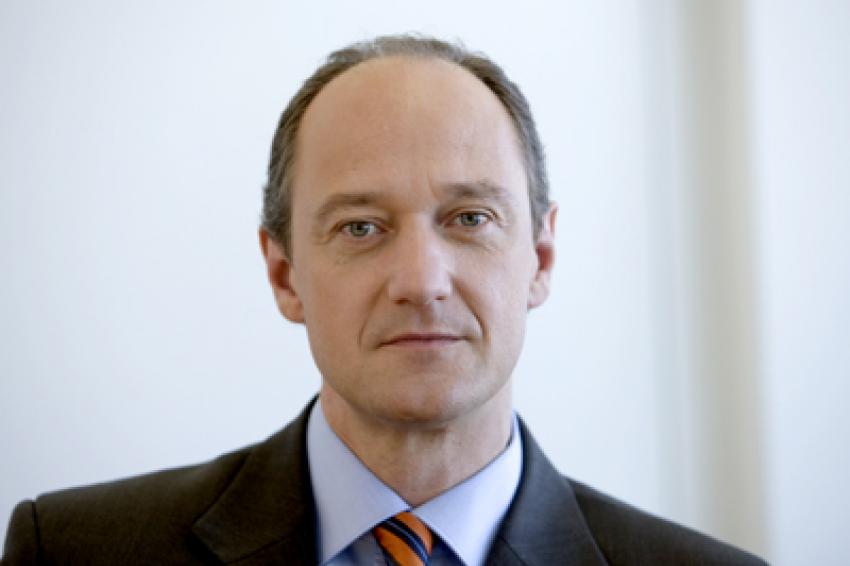Siemens: New structure
New Infrastructure & Cities Sector will contain the Mobility and Building Technology Divisions
Siemens will start off fiscal 2012 on October 1, 2011 with a further developed structure. The newly founded Infrastructure & Cities Sector begins operation on that day, as planned. In the future, the operating businesses of Siemens will be organized in the Industry, Infrastructure & Cities, Energy, and Healthcare Sectors. By forming the new Sector, the company plans to be a leading participant in the dynamic growth of cities and infrastructure investments. "We are rigorously focusing our business on growth. Our new setup will put us even closer to our customers. The Infrastructure & Cities Sector will open up additional business opportunities in the growth market of cities," said Peter Löscher, President and CEO of Siemens AG. "Cities face the enormous challenge of reconciling urban growth with a good quality of life. We can offer them comprehensive solutions from one hand to achieve this. In order to better serve the needs of cities, we are focusing the new Sector specifically on cities and infrastructure," stated Roland Busch, CEO of the Infrastructure & Cities Sector.
In the coming days, the global population will surpass the seven-billion mark. Ever greater numbers of people want to live in cities and will do so. Today, over half of the global population already lives in cities and this share will climb to 60 percent within 20 years, an increase of 1.4 billion urban residents. In response to this growth, cities throughout the world will have to massively invest in expanding their infrastructures. The market for urban investments addressed by Siemens currently totals around €300 billion a year. Siemens already offers the world's broadest and most comprehensive portfolio for urban infrastructures.
New Infrastructure & Cities Sector will contain the Mobility and Building Technology Divisions
The new Infrastructure & Cities Sector will manage the company's global business with cities and infrastructures from Munich, Germany. Siemens is bundling its competencies and business activities in one unit in order to offer cities solutions for mobility, environmental protection and energy saving. The new Sector, with around 87,000 employees, will contain the Mobility and Building Technology Divisions from the Industry Sector, as well as the Power Distribution Division and Smart Grid business from the Energy Sector.
Infrastructure & Cities will comprise five Divisions: Rail Systems (rolling stock), Mobility and Logistics (traffic, transport and logistics management), Low and Medium Voltage, Smart Grid (intelligent power grids) and Building Technologies. Under this new setup, the Divisions can orient their respective businesses even closer to their target markets and, through close cooperation within the Sector, develop additional business opportunities in the growth market of cities.
To take advantage of this additional growth potential, Siemens will employ a new approach for sales as well as for research and development in its urban business. The Sector's Centers of Competence, in which Siemens will bundle its expertise for urban infrastructures, are an important element in this strategy. The first Center is currently being built in London and two others are planned for Asia and the U.S. Here, Siemens experts will conduct research for new urban solutions and tailor special packages of Siemens products for urban planners and mayors. These include integrated traffic solutions for preventing congestion as well as innovative concepts for reducing power consumption - and thus city costs - on a broad basis. Even in times of limited public budgets, Siemens solutions - such as Energy-Saving Contracting - help cities and communities cut costs and improve their environmental protection balance. Moreover, Siemens solutions like traffic tolling systems offer cities and communities new sources of income.
Siemens meets with urban decision-makers directly through a team of City Account Managers. As a central contact partner, they can offer their respective city the entire Siemens portfolio from one hand. In addition, they contribute their experiences to help further develop the company's portfolio for cities. Customer proximity is a key driver for ensuring sustainable company growth and is part of the One Siemens target system.
The Industry Sector and its new organization will focus on industry customers. The Sector will further reinforce its industry-specific and service business and expand its leading role in industrial software. The Sector with more than 100,000 employees will have three Divisions: Industry Automation and Drive Technologies as well as the newly founded Customer Services. To fulfill the specific requirements posed by large-scale plant construction, Metals Technologies will be organized as a business unit that is directly Sector-led.
The Energy Sector remains the world's leading supplier of a broad spectrum of products, solutions and services for power generation and transmission, and for the production, conversion and transport of the primary energy sources oil and gas. With around 75,000 employees, the Sector will have six Divisions: Fossil Power Generation, Wind Power, Solar & Hydro, Energy Service, Oil & Gas, and Power Transmission.
The Healthcare Sector, unaffected by the reorganization and with around 49,000 employees, remains one of the world's biggest providers in the healthcare segment and is organized in three Divisions: Imaging & Therapy Systems, Clinical Products, and Diagnostics









